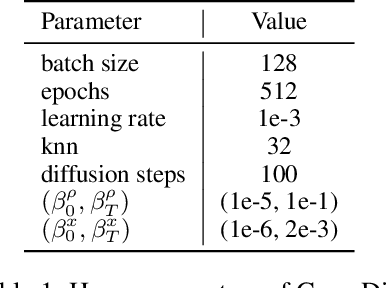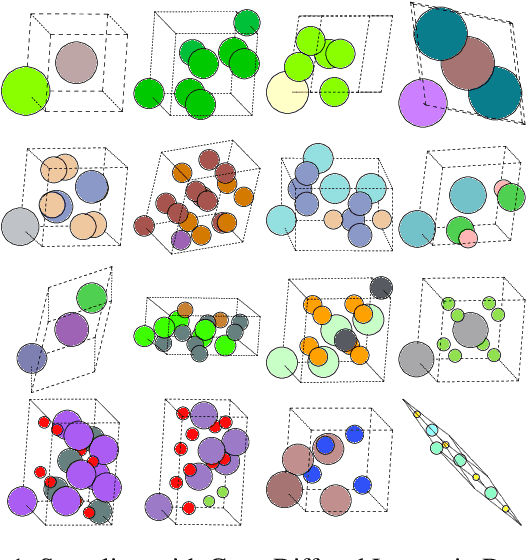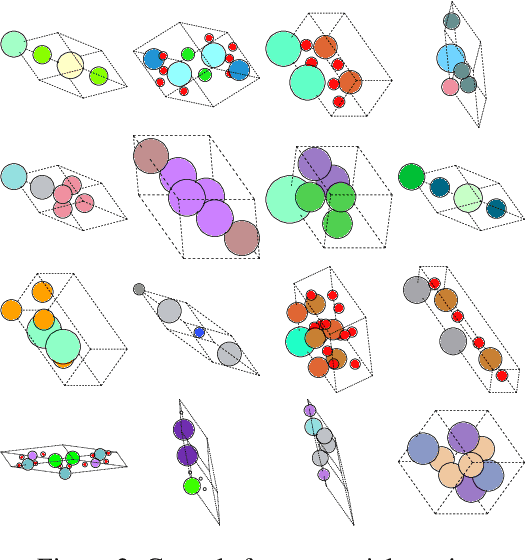Yaël Fregier
Vector Field Oriented Diffusion Model for Crystal Material Generation
Dec 20, 2023



Abstract:Discovering crystal structures with specific chemical properties has become an increasingly important focus in material science. However, current models are limited in their ability to generate new crystal lattices, as they only consider atomic positions or chemical composition. To address this issue, we propose a probabilistic diffusion model that utilizes a geometrically equivariant GNN to consider atomic positions and crystal lattices jointly. To evaluate the effectiveness of our model, we introduce a new generation metric inspired by Frechet Inception Distance, but based on GNN energy prediction rather than InceptionV3 used in computer vision. In addition to commonly used metrics like validity, which assesses the plausibility of a structure, this new metric offers a more comprehensive evaluation of our model's capabilities. Our experiments on existing benchmarks show the significance of our diffusion model. We also show that our method can effectively learn meaningful representations.
Equivariant Message Passing Neural Network for Crystal Material Discovery
Feb 01, 2023



Abstract:Automatic material discovery with desired properties is a fundamental challenge for material sciences. Considerable attention has recently been devoted to generating stable crystal structures. While existing work has shown impressive success on supervised tasks such as property prediction, the progress on unsupervised tasks such as material generation is still hampered by the limited extent to which the equivalent geometric representations of the same crystal are considered. To address this challenge, we propose EMPNN a periodic equivariant message-passing neural network that learns crystal lattice deformation in an unsupervised fashion. Our model equivalently acts on lattice according to the deformation action that must be performed, making it suitable for crystal generation, relaxation and optimisation. We present experimental evaluations that demonstrate the effectiveness of our approach.
 Add to Chrome
Add to Chrome Add to Firefox
Add to Firefox Add to Edge
Add to Edge